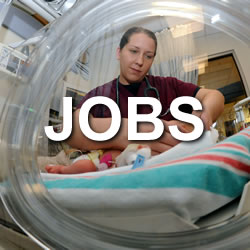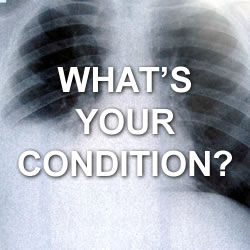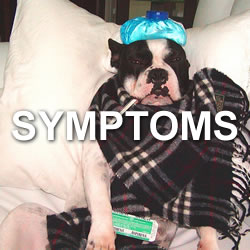Cutaneous T Cell Lymphoma
Surround yourself with only people who are going to lift you higher - Oprah

image by: Cutaneous Lymphoma Foundation
HWN Suggests
Thank God for Medicare
Enough already. Why does it have to be me all the time? It feels like I’m walking around with a bullseye target on my front and a “kick me” sign on my rear end.
To quote comedian and film director, Woody Allen, “I don't want to achieve immortality through my work; I want to achieve immortality through not dying. I don't want to live on in the hearts of my countrymen; I want to live on in my apartment.”
All I can say is “thank God for Medicare” as I have recently started my third face-off with cancer.
Ten years ago my family doctor discovered an enlarged prostate gland and further tests showed I had early stage prostate cancer.
The cancer was slow growing, so…
Resources
 Cutaneous lymphomas and COVID‐19: What is known so far?
Cutaneous lymphomas and COVID‐19: What is known so far?
This review sheds the light on what is known so far about COVID‐19 with a cutaneous lymphoma perspective. Cutaneous T‐cell lymphoma (CTCL) diagnosis does not represent a predisposing factor to viral infections and most of CTCL patients have indolent disease.
 Potential new drug target to treat cutaneous T cell lymphoma
Potential new drug target to treat cutaneous T cell lymphoma
Drug that blocks methylation restores SATB1 expression and may be effective against disease.
Good News about CTCL and My Mycosis Fungoides
This past Tuesday I saw the dermatologist, for our six-week assessment, and . . . Good News! . . .all the cancer—on chest, inner arms, inner legs—is now inactive. I don’t even need to use the steroidal cream! She explained that the cancer will return but it will most likely stay in Stage 1 as long as we treat it promptly.
Richard’s Story: Living with CTCL
The initial stress, worry and shock will subside—and rarely does it become life-threatening for the vast majority of patients. It is a manageable disease. As time goes by you learn to deal with it.
Sézary Syndrome Discriminates Among Ethnicities
"Our study showed poorer survival in black patients with Sézary syndrome,” he said. “Obviously, we need more research to understand the main differences and how we can overcome these racial disparities where they exist."
The way we think about cancer is outdated. Here’s how to change that
When Susan Thornton was 30, she noticed a flat red rash in a small band around her waist. It was itchy and terribly persistent. No cream or lotion made it go away. One year and half a dozen dermatologists later, she was diagnosed with mycosis fungoides, a rare form of non-Hodgkin lymphoma that's often mistaken for eczema or psoriasis in its early stages. Twenty-five years later, Thornton's cancer is still around. It persists mostly as a manageable rash, treated with a topical steroid. At certain points the disease has flared up, requiring more drastic treatments.
Virtual Chemotherapy
Today, whether you want to or not, you are coming along for a ride to my chemotherapy session. You’re welcome. You might call this a virtual chemo experience.
 Thank God for Medicare
Thank God for Medicare
Initially, the type of CTCL the doctors thought I had was classified by the name of mycosis fungoides (and let me assure you that the “fun” part is grossly exaggerated), but just recently the diagnosis has been changed to Sezary Syndrome, an even rarer form of lymphoma. This type of lymphoma affects the skin and since the skin is our biggest organ, it’s a head to toe experience!
Journey Through Mycosis Fungoides
My journey through diagnosis, treatment and hopefully remission of cutaneous t-cell lymphoma, specifically mycosis fungoides.
My Battle w/Mycosis Fungoides & Sezary Cell Syndrome
CTCL-Lymphoma Cancer also known as Mycosis Fungoides This is my story of the graciousness of God and the support of friends and my wonderful family!
Cutaneous Lymphoma Foundation
The Cutaneous Lymphoma Foundation is an independent, non-profit patient advocacy organization dedicated to supporting every person affected by cutaneous lymphoma by promoting awareness and education, advancing patient care and fostering research for the best possible outcomes.
International Society for Cutaneous Lymphomas
Dedicated to the treatment, research and caring of patients with cutaneous lymphomas.
Lymphoma Research Foundation
T-cell lymphomas account for approximately 15 percent of all NHLs in the United States. There are many different forms of T-cell lymphomas, some of which are extremely rare. Most T-cell lymphomas can be classified into two broad categories: aggressive (fast-growing) or indolent (slow-growing). One of the most common forms of T-cell lymphoma is cutaneous T-cell lymphoma (CTCL),
United States Cutaneous Lymphoma Consortium
The United States Cutaneous Lymphoma Consortium (USCLC) is a multidisciplinary professional organization dedicated to improve the quality of life and prognosis of patients with cutaneous lymphomas through discovery and application of new knowledge.
CancerCare
CTCL is a rare cancer affecting white blood cells called T-lymphocytes (T-cells). T-cells are important to your immune system, which helps the body fight infection. When T-cells start to grow too quickly, they can accumulate in the body, causing a cancer called T-cell lymphoma. T-cell lymphoma primarily affecting the skin is called CTCL. Thanks to recent treatment advances, many patients are able to maintain their quality of life while managing their CTCL, and some are able to remain in remission (cancer stops growing) for long periods of time.
DermNet NZ
Mycosis fungoides is the most common type of CTCL and accounts for almost 50% of all primary cutaneous lymphomas. The second most common group of CTCL is primary cutaneous CD30+ lymphoproliferative disorders.
Patient
The diagnosis of early mycosis fungoides often needs integration of clinical, histological and molecular features, since it can be confused with benign eczematous skin disease.
Syndromespedia
Sézary syndrome abbreviated as SS is an erythrodermic type of cutaneous T-Cell lymphoma (CTCL) which is a term that includes all groups of cutaneous lymphomas that arise from T-lymphocytes.

Introducing Stitches!
Your Path to Meaningful Connections in the World of Health and Medicine
Connect, Collaborate, and Engage!
Coming Soon - Stitches, the innovative chat app from the creators of HWN. Join meaningful conversations on health and medical topics. Share text, images, and videos seamlessly. Connect directly within HWN's topic pages and articles.













